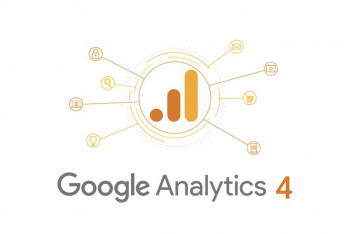In digital marketing, one of the most essential concepts to grasp is Search Engine Optimisation (SEO). It's a vast field with numerous components, each carrying its own significance and contribution to your website's visibility on search engines. To fully harness the power of SEO, it's crucial to become familiar with the terminology, much like learning a new language. This is where our 'SEO Terms Glossary' comes into play.
Designed to be your go-to reference, this SEO Terms Glossary presents an A-Z guide covering fundamental terms, algorithms, strategies and more. From understanding the implications of '301 Redirects' to demystifying the importance of 'Meta Descriptions,' this glossary seeks to simplify the complexities of SEO jargon terms.
Whether you're a novice digital marketer, a seasoned professional needing a quick refresher, or a curious business owner looking to boost online visibility, our 'SEO Terms Glossary' is here to light your way. Prepare to explore the intricacies of SEO, broadening your knowledge, and empowering your digital marketing journey. Let's begin this journey through the world of SEO terminology.
301 Redirect
This refers to the HTTP status code for permanently moving a web page to a new location. A 301 redirect is a crucial technique for maintaining a website's domain authority and search rankings when the site's URL is changed for any reason.
404 Not Found Error
This HTTP status code signifies that the page a user is trying to access could not be found on the server. It can occur for various reasons like the page has been removed or the URL has been changed. It's crucial for website owners to monitor and fix 404 errors to ensure a positive user experience and keep their webpages accessible to search engines.
Alt Text (Alternative Text)
This is a description that is added to the HTML code of an image on a web page, which helps search engines understand what the image represents. It's particularly important for users with screen readers due to vision impairment, as the alt text describes the content of the image.
Anchor Text
The visible, clickable text in a hyperlink is referred to as anchor text. This text is often used by search engines to understand the context of the page being linked to. Appropriate anchor text can significantly enhance the user experience and help in boosting SEO.
Backlink
A backlink is a link from another website that directs towards your site. They are one of the key factors that search engines like Google use when determining a site's ranking. High-quality backlinks can enhance a site's SEO, while low-quality or spammy backlinks can negatively affect rankings.
Black Hat SEO
This term refers to the use of aggressive and often unethical SEO strategies, techniques, and tactics that focus only on search engines, not a human audience, and usually violate search engine guidelines. Examples include keyword stuffing, cloaking, and using private link networks.
Broken Link
A broken link, or dead link, is a link that no longer works or leads to an inaccessible page. Broken links can harm a website's SEO and user experience.
Canonical URL
A canonical URL is the URL that you want search engines to consider the most authoritative for a particular page on your site. This is especially useful if you have duplicate content across multiple URLs, as it helps prevent dilution of page ranking.
Citation Flow
Citation flow is a number predicting how influential a URL might be based on how many sites link to it. It's a metric developed by Majestic SEO(external link) and is a score between 0-100.
Cloaking
Cloaking is a deceptive black hat SEO technique where the content presented to the search engine spider is different from that presented to a user's browser. This is done to trick search engines so they display the webpage when it wouldn't otherwise be displayed.
Crawler (also Spider, Bot)
A web crawler, spider, or bot, is a software application that search engines use to scan and index websites on the internet. The information gathered by the crawler is used by search engines to rank websites.
Domain Authority
Developed by Moz, Domain Authority(external link) is a metric used to understand how well a website is likely to rank on search engine result pages (SERPs). It's scored on a 100-point logarithmic scale. The higher the score, the better the website's ability to rank.
DoFollow Link
A DoFollow link is a standard hyperlink that has no modifications or restrictions. It allows search engines to follow them and reach the website, passing on link juice and boosting the page rank of the linked-to sites.
Duplicate Content
Duplicate content refers to content that appears on the Internet in more than one place, defined as a set of content that either completely matches other content or is considerably similar. This can be on the same domain or across multiple domains and can negatively affect SEO.
External Link
Also known as outbound links, external links are hyperlinks that point at any domain other than the domain the link exists on. If another website links to you, this is considered an external link to your site. If you link out to another website, this is also considered an external link.
Google Hummingbird
Google Hummingbird is a major algorithm update that was introduced in 2013. It focused on understanding the intent and contextual meaning of search queries, rather than focusing solely on individual keywords. It allowed Google to do a better job at matching queries with relevant web content.
Google Panda
Google Panda is an update to Google's search results ranking algorithm that was first released in February 2011. The update aimed to lower the rank of "low-quality sites" or "thin sites" and return higher-quality sites near the top of the search results.
Google Penguin
Google Penguin is an algorithm update aimed at decreasing search engine rankings of websites that violate Google's Webmaster Guidelines by using black-hat SEO techniques such as keyword stuffing, cloaking, participating in link schemes, deliberate creation of duplicate content and others.
Google RankBrain
Google RankBrain is a component of Google's core algorithm which uses machine learning to determine the most relevant results to search engine queries. Pre-RankBrain, Google utilised its basic algorithm to determine which results to show for a given query.
Google Penalty
A Google Penalty is a punishment given by Google to websites that fail to comply with its guidelines. This punishment usually results in a significant drop in rankings and can be the result of black-hat SEO techniques, poor user experience, slow site speed, or poor mobile compatibility.
Grey Hat SEO
Grey Hat SEO practices fall into a grey area between white hat and black hat SEO. These tactics are riskier than white hat techniques but aren't as blatantly against search engine guidelines as black hat techniques. They often involve tactics such as clickbait, link exchanges, and paying for reviews.
Inbound Link
An inbound link, also known as a backlink, is a link coming to your site from another website. These links bring in traffic and have an impact on your site's search rankings.
Internal Link
An internal link connects one page of a website to a different page on the same website. These links are useful for establishing site architecture and spreading link equity.
Keyword
A keyword in the context of SEO is a specific word or phrase that individuals type into a search engine when looking for specific content. The goal of SEO is to have your website appear in the search results when these keywords are used.
Keyword Density
Keyword density refers to the number of times a keyword appears on a specific webpage or within a piece of content as a ratio or percentage of the overall word count. This is significant for SEO as Google may penalise websites for keyword stuffing.
Keyword Stuffing
This is an outdated black hat SEO tactic that involves overloading a webpage with keywords in an attempt to manipulate a site’s ranking in Google search results. Keyword stuffing can result in a Google penalty.
Link Building
Link building is the process of acquiring hyperlinks from other websites to your own. These links help users navigate between pages on the internet and are instrumental in SEO strategy as they help to improve search engine rankings.
Link Farm
A link farm is a group of websites created by individuals or organisations that hyperlink to every other site in the group. This is a form of spamming and is considered a black hat SEO practice.
Link Juice
Link juice is a colloquial term in the SEO world that refers to the value or equity passed from one page or site to another. This value is passed through hyperlinks and can influence the ranking of the linked-to sites.
Local SEO
Local SEO is an effective way to market your business online. It helps businesses promote their products and services to local customers at the exact time they're looking for them. It involves various strategies, like managing online reviews and ratings, claiming directory listings, and optimising for local keywords.
Long-tail Keyword
Long-tail keywords are longer and more specific keyword phrases that visitors are more likely to use when they're closer to a point-of-purchase or when they're using voice search.
Meta Description
A meta description is an HTML attribute that provides a brief summary of a webpage. It's often used on search engine results pages (SERPs) to display preview snippets for a given page. It's important for attracting user clicks from search results.
NoFollow Link
A nofollow link is a type of link that tells search engines to not pass any link authority from your page to the other website that you're linking to. You can turn a regular dofollow link into a nofollow link by adding the rel="nofollow" attribute.
Organic Traffic
Organic traffic refers to the visitors who land on your website as a result of unpaid ('organic') search results. Organic traffic is the opposite of paid traffic, which defines the visits generated by paid advertisements.
Outbound Link
An outbound link, also known as an external link, is a link that points from your website to a different website. They provide a way to give more depth to your content and show search engines that you regularly associate with reputable, high-quality sources.
Page Authority
Page Authority (PA) is a score developed by Moz that predicts how well a specific page will rank on the search engine result pages (SERP). PA is a score (on a 100-point scale) developed by Moz that predicts how well a particular page will rank on Google.
Robots.txt
A robots.txt file tells search engine crawlers which pages or files the crawler can or can't request from your site. It is used mainly to avoid overloading your site with requests; it is not a mechanism for keeping a webpage off Google.
Search Engine Results Page (SERP)
The page that you are sent to after you perform a search using a search engine like Google, Yahoo or Bing. The major search engines typically display three kinds of listings on their SERPs: listings indexed by the search engine, listings that are paid for, and listings from their directories.
Search Intent (also User Intent)
Search intent (or user intent) is the ultimate goal of the person using a search engine. Every single search done on a search engine has an underlying intent. Understanding and optimising for the search intent of your target audience can significantly improve the visibility and conversion rate of your website.
Search Volume
Search volume refers to the number of times a particular phrase is searched for. It's a handy metric to evaluate the size of your potential audience, decide on the specific keywords for your SEO, and understand the seasonality in your industry.
SEO Audit
An SEO Audit is an in-depth analysis of a website's ability to rank on search engine results pages (SERPs). This involves examining the site based on a specific checklist, pinpointing weaknesses and strengths, and producing tailored recommendations to enhance its search engine visibility and performance.
Sitemap.xml
Sitemap.xml is a file where you provide information about the pages, videos, and other files on your site, and the relationships between them. It helps Google and other search engines navigate your site and understand your content better.
Trust Flow
Trust Flow is a number predicting how trustworthy a page is based on how trustworthy sites tend to link to trustworthy neighbours. It's a metric developed by Majestic SEO and is a score between 0-100.
White Hat SEO
White Hat SEO refers to the usage of optimisation strategies, techniques and tactics that focus on a human audience and entirely follow search engine rules and policies. These practices produce lasting results and a better user experience. Examples include using relevant keywords, giving users quality content, making your site easy to navigate, and so forth.
Feeling overwhelmed by the complexities of SEO? Don't worry! At Somar Digital, we're ready to translate this SEO glossary into a winning strategy for your business. Speak with one of our SEO Specialists today and let’s elevate your digital presence together.




